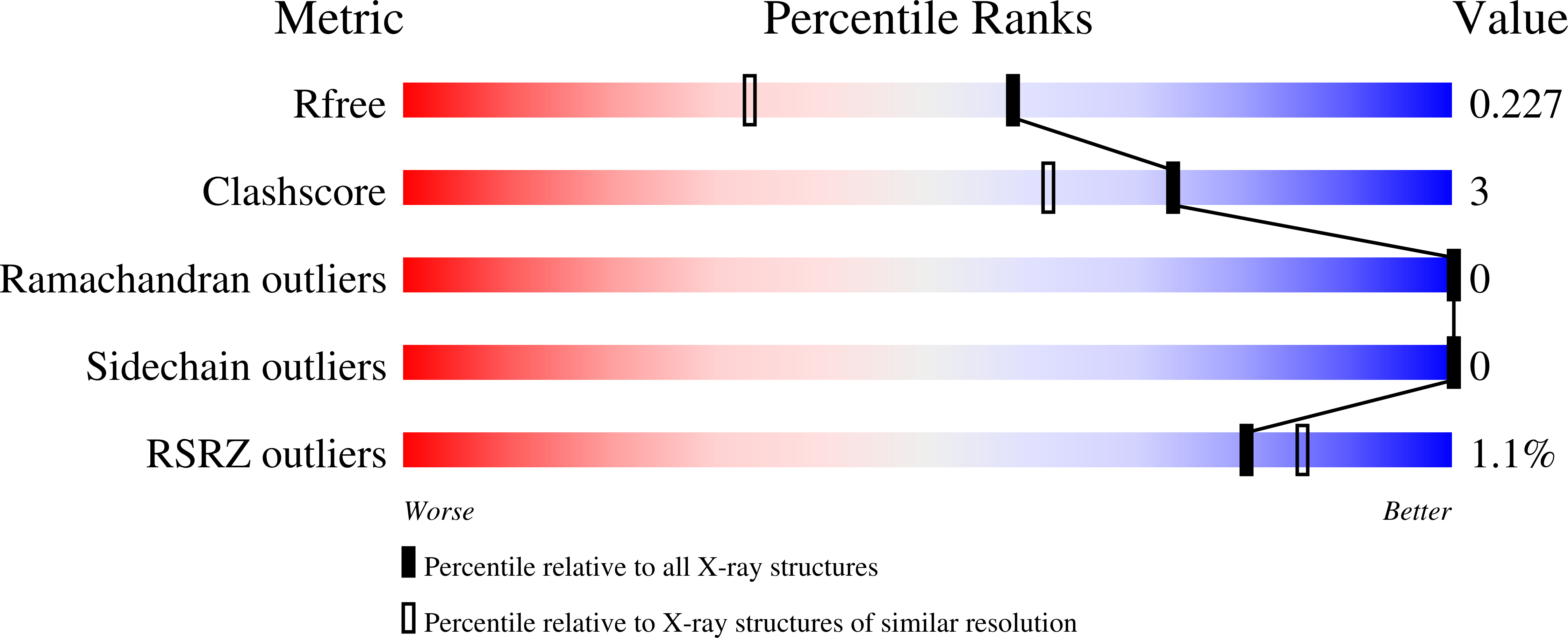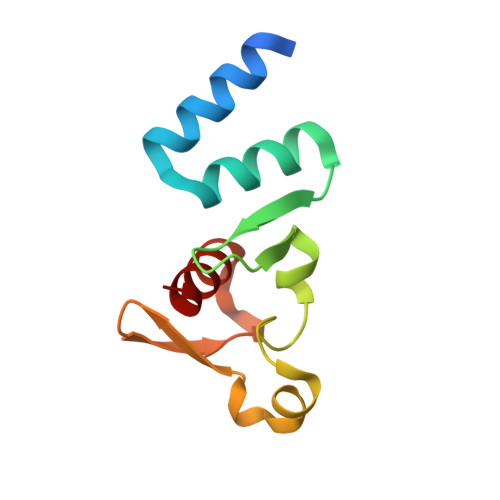The structure of the C-terminal domain of the Zaire ebolavirus nucleoprotein.
Dziubanska, P.J., Derewenda, U., Ellena, J.F., Engel, D.A., Derewenda, Z.S.(2014) Acta Crystallogr D Biol Crystallogr 70: 2420-2429
- PubMed: 25195755
- DOI: https://doi.org/10.1107/S1399004714014710
- Primary Citation of Related Structures:
4QAZ, 4QB0 - PubMed Abstract:
Ebolavirus (EBOV) causes severe hemorrhagic fever with a mortality rate of up to 90%. EBOV is a member of the order Mononegavirales and, like other viruses in this taxonomic group, contains a negative-sense single-stranded (ss) RNA. The EBOV ssRNA encodes seven distinct proteins. One of them, the nucleoprotein (NP), is the most abundant viral protein in the infected cell and within the viral nucleocapsid. Like other EBOV proteins, NP is multifunctional. It is tightly associated with the viral genome and is essential for viral transcription, RNA replication, genome packaging and nucleocapsid assembly prior to membrane encapsulation. NP is unusual among the Mononegavirales in that it contains two distinct regions, or putative domains, the C-terminal of which shows no homology to any known proteins and is purported to be a hub for protein-protein interactions within the nucleocapsid. The atomic structure of NP remains unknown. Here, the boundaries of the N- and C-terminal domains of NP from Zaire EBOV are defined, it is shown that they can be expressed as highly stable recombinant proteins in Escherichia coli, and the atomic structure of the C-terminal domain (residues 641-739) derived from analysis of two distinct crystal forms at 1.98 and 1.75 Å resolution is described. The structure reveals a novel tertiary fold that is distantly reminiscent of the β-grasp architecture.
Organizational Affiliation:
Department of Molecular Physiology and Biological Physics, University of Virginia School of Medicine, Charlottesville, VA 22908-0736, USA.














